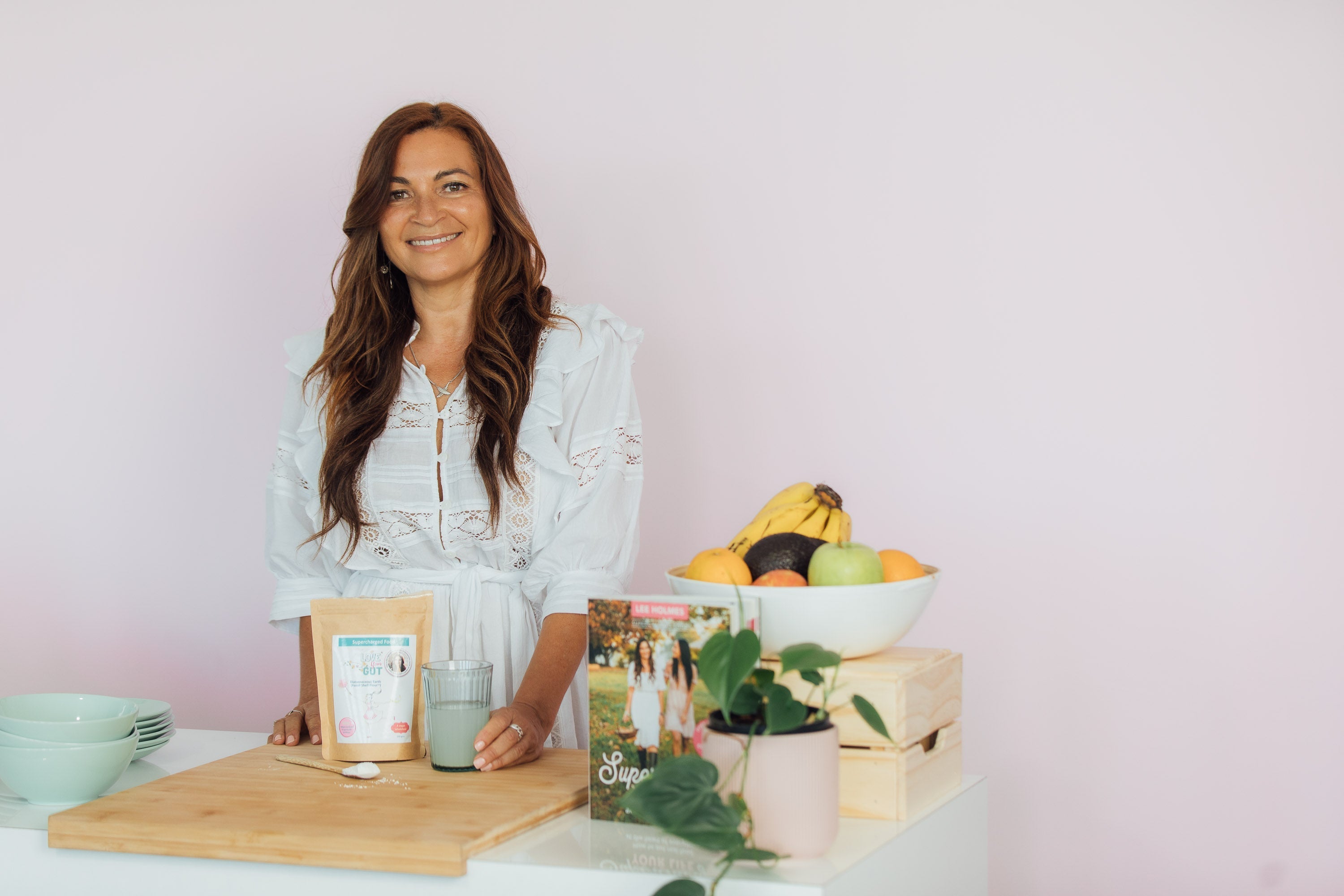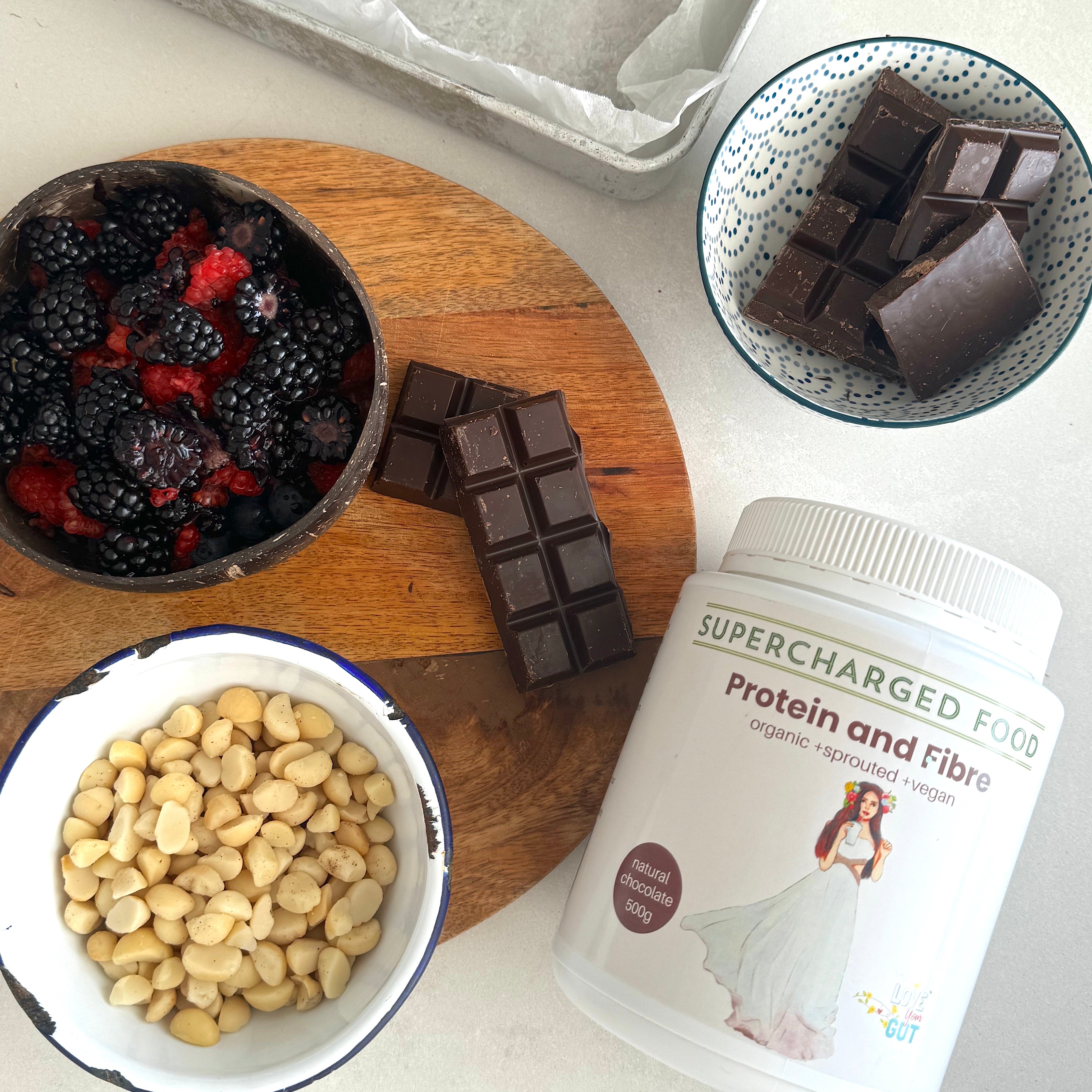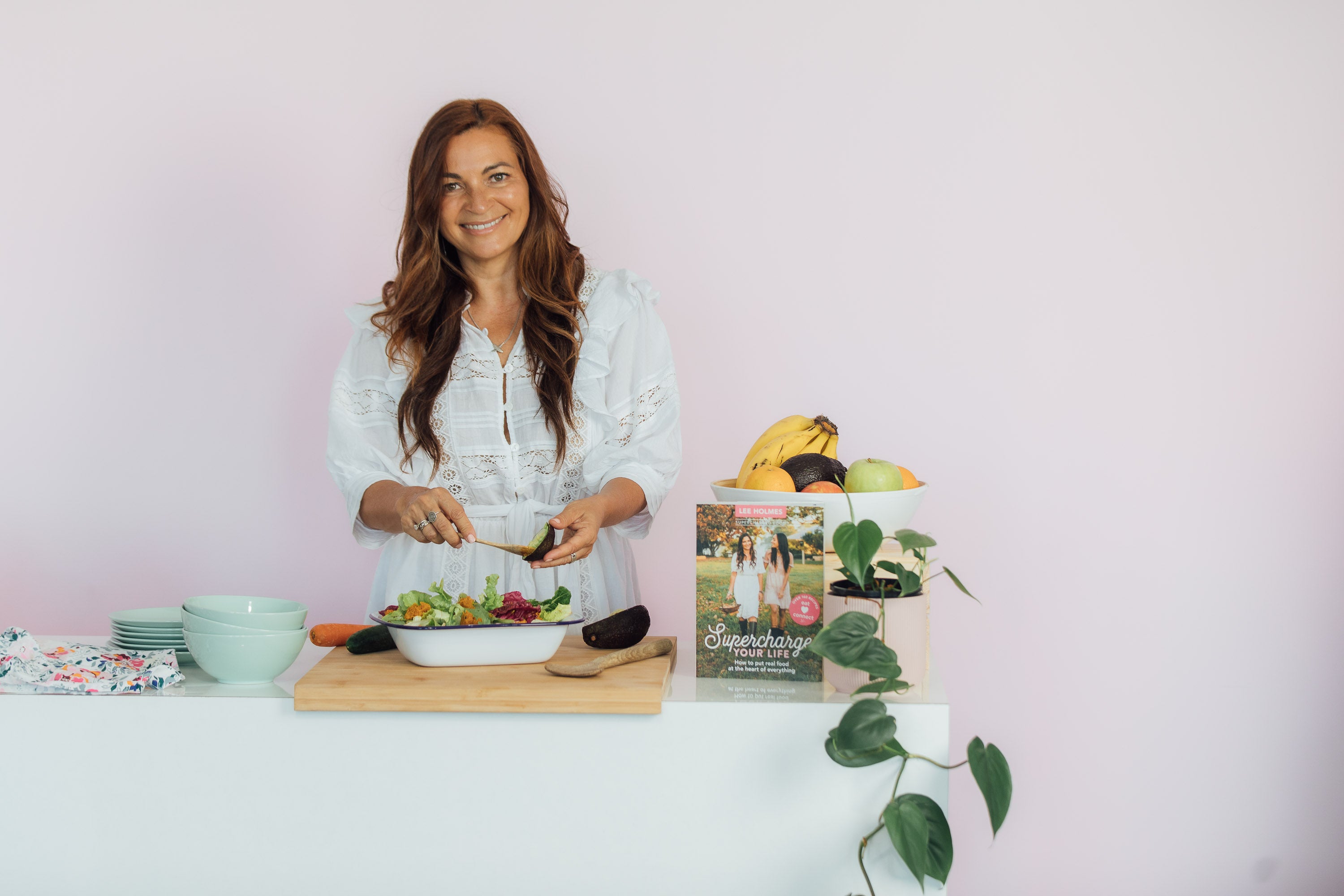As more people are staying at home in light of the novel coronavirus it’s probably a good time to get your pantry in order. That doesn’t mean you have to go crazy and buy out the whole store or fight over toilet paper (we’ve all seen THAT video). Ok rolling on…
As a minimalist, neat freak 😉 the idea of stockpiling to me is a tough one, personally I try to live with just one of everything. However, I also think about the many people who can’t get out to the shops regularly, people who are not well and need certain ingredients and medications. The last thing we need is for the elderly or people in need to be out of supply of their everyday essentials because others are buying and hoarding unnecessary amounts.
I’ve had some requests from clients this week for a plan and shopping list, so I’d love to show you how to stockpile your pantry for a 14-day period in case you need to be at home due to quarantine reasons. I’ve based it upon feeding a family of four. Just halve the amount for couples or quarter for singles.
You don’t need to be a doomsday prepper to get into stockpiling, it’s really a case of being prepared and having things on hand when you need them, and by the way, I don’t just mean 12 cans of pre-made pasta sauce, 14 tins of spam and oodles of pasta shells.
I’d love to give you some ideas on healthy and affordable meals you can make at home too. I understand that budget is also a concern for some but if you buy the basics in bulk, you can have a healthy stockpile whether you’re a large family or a cash-strapped student.

Another way to think about the potential of being at home and getting your pantry sorted is the way that you look at food itself. When you think about food, look at it as investment in your life and family, with smart meal planning and budgeting, these acts can become a simple yet beautiful source of fulfillment in your life. Cooking is a wonderful activity to get the whole family involved in, and a nice return to a more grounded and simple way of life.
Food is part of our everyday lives so it’s important to make eating well as easy and enjoyable as possible during this time. Whether you’re a meat-eater, flexitarian, keto enthusiast, paleo, vegetarian, vegan, gut lover or somewhere in between, don’t worry I’ve got you, I’ve created a shopping list that can work for everyone, it just takes a little bit of mixing and matching.
Traditionally in emergency situations, basic general needs come into play, but that doesn’t mean you need to live off bland and boring food. If you make a plan, you can enjoy a great variety of colourful foods that are high in nutrients and ones that will make you feel good AND look after your health.
So where to start? There’s nothing worse, and I mean nothing, than a chaotic spread of every ingredient lurking in the pantry. The very idea of it makes my skin crawl! That being said, first thing’s first, let’s get the hard thing out of the way.

I need you to go through every single item in your pantry and fridge and bin anything that’s past it’s use-by-date or likely to give you food poisoning! Then put things back in date order if you can with supplies you need to use first at the front and then staples and longer use items at the back. I personally love the idea of a ‘one ingredient pantry’, where everything is a single spice, herb, grain or other food item.
Next up it’s all about meal prep, meal prep, meal prep! Figure out your meal plans for the 14 days and plot in when you’ll be cooking and eating specific recipes. Take note of everything from breakfast to dinner, including any herbal teas or snacks you may like to have on hand. There are a bunch of easy recipes here on the blog from Shepherd’s Pie to Moussaka and Savoury Mince too. I’ve also got my Top Ten Sit Down Family Meals.

A little bit of prep now makes your whole day a lot easier later on; trust me! You can read more about meal prepping here. This way you’ll fill your kitchen with everything you need, without needing to worry about breaking your budget and wasting purchases. If you're on a budget it helps to do a quick price comparison and check the prices at your supermarket or local grocer and think about bulk options that are available in your area.
Once you’ve done this, you’ll need to make time for food preparation, just think of it as a fun activity and get the family involved. Do you need to make your own bone broths or buy them? Are there times you wont be able to cook dinner, requiring a batch-cooking session beforehand? Note all these subtleties, so your meal planning helps you rather than acts as a burden.

Think about where you do the majority of your food shopping. It may be the time to consider local producers, co-ops, buy in bulk stores and services that offer the best price and quality ingredients before you go out on your stockpiling spree. Sometimes, online grocery shopping can be even cheaper than your usual store and as an added bonus; it's delivered straight to your door. How easy is that? Plus, online stores often have special offers so keep an eye out for them.
I’ve got the two-week shopping list ready for you below, so maybe print it off and check off the things already in your pantry, fridge and freezer. This will totally change the productivity of your household food gathering. It’ll ensure you’re fully prepped.
The best place to start when looking at the pantry is with your non-perishables and we’ll start with…

Grains, Seeds and Pasta
An absolute staple, grains, seeds and pasta are among the most affordable ingredients you can add to any meal. Using brown or basmati rice (healthier than white), quinoa and buckwheat (if you’re gluten free) and oats will enable you to create some hearty and nourishing dishes. Each one is versatile, budget-friendly and will last for months sealed in a jar in your pantry.
If you plan to reheat a dish that you’ve made the night before, add some brown rice or grains to bulk it up and allow it to serve the whole family – and at the same time it makes it even more affordable. Repurposing last night’s roast meat or vegetables into a fried rice is super-fast and makes for a tasty and convenient lunch the next day. Brown rice is full of fibre and a great way to satisfy your tummy.

Quinoa has become more popular over the last few years and it’s a more affordable and versatile ‘powerfood’ of today. The versatility of quinoa is good as it can transport you from breakfast to dinner.
Buckwheat has also become a go-to grain substitute in recent times, and is a scrumptious alternative to rice or can be made into porridge for a warming breakfasts, good for autumn in Australia.
Oat porridge is a perfect way to start a cooler autumn day. Tasty and tremendously satisfying, oats are high in fibre and a perfect way to ensure the family is satisfied. Or try this Quinoa Porridge with Cinnamon and Apple.
For a 14-day period for a family of four, buy the following, in bulk if possible:
- 1 x 5kg bag of rice
- 2 x 1 kg bag of quinoa
- 1 x 5kg bag of oats
- 1 x 1kg bag buckwheat
- 3 x bags pasta

Have Your Fingers on the Pulses
Pulses (or legumes) will play a key role in your supercharged stockpiling. Stocking chickpeas, cannellini beans, lentils, split peas and other pulses is a convenient and inexpensive way to jazz up the leftover vegetables from last night’s dinner. You’ll be able to create a lentil curry, a totally dahl-icious Supercharged Dahl or Chickpea Marrakesh Casserole, or make mouth-watering dips. Split peas are great to add to soups or casseroles and make dishes last longer.
Pulses provide protein, complex carbohydrates and several vitamins and minerals that give sustained energy throughout the day. They’re known to lower blood pressure and reduce LDL cholesterol levels, adding a supercharged kick to any meal.
Unopened raw pulses can last for years in the pantry, reducing the chance of waste, and are really simple to prepare. Once you’ve cooked up a batch of your favourite pulse, you can store any unused portion in the fridge for up to five days as a quick and easy addition to your remaining week’s meals.
Throw the following in your trolley:
- 1 x 5kg bag red or green lentils
- 1 x 2 kg bag of split peas
- 1 x 1 kg cannellini beans

Stock Up on Healthy Flavour Providers
Onions and garlic, both from the Allium genus of plants, are two of my favourite flavour accompaniments to use in cooking. They don’t just play an important culinary role; they also provide a plethora of health benefits.
Onions can stay fresh for well over a month in your pantry, and garlic can last for more than three months, so you’ll have your flavour friends right by your side for a good length of time.
Shine a light on these bulbs:
- 7 x garlic bulbs
- 8 x brown and red onions

Flavour Up with Dried Herbs and Spices
Herbs and spices are a dream come true in the kitchen; there’s hardly a dish that doesn’t benefit from including them. You can grown them or buy them fresh or dried. If you have fresh, to keep them longer, dry or dehydrate them yourself and store.
Some tasty herbs to use in your kitchen everyday and incorporate into your menu planning are ones such as mint, which can be used as a tea too or in salads, vegetables and lamb dishes.
Sage is good too. It’s a herb often used by herbalists as a remedy for respiratory infections. The oils and tannins in Sage have astringent, antiseptic and irritant properties, helping to loosen up congestion, treat coughs and soothe sore throats. You can flavour meats, roasts and vegetables with sage. I love making crispy sage leaves you can find out how here.
Rosemary is an anti-inflammatory and restorative herb that has a soothing effect on the nerves. It’s lovely when paired with oven roasted vegetables and meat dishes.
Oregano is another good herb to stockpile. It’s known as a strong antiseptic as it’s high in Carvacrol, a type of phenol known for its potency and its perfect with fish and Italian dishes.
For some spice add some Cayenne pepper into the mix. It’s made from the dried pods of chilli peppers. It helps the body to create hydrochloric acid, which enhances digestion and assimilation of protein too. During the 14-day period, pop it in your stir-fries, curries, Asian inspired dishes and soups.

The next herb to put on the list is Basil, as it’s very high in antioxidants, especially when used in the form of an oil or extract. Incorporating Basil into your diet will assist in reducing occurrences of common colds and the flu. Basil also holds antibacterial properties and can be used to disinfect surfaces. Add to salads, pizza and pasta dishes.
Tick Turmeric off you’re stockpiling list, it can be used widely to flavor foods. I like to sprinkle it on oven-roasted cauliflower, and use in soups and curries. You might want to try this anti-inflammatory toddy recipe.
Grab some Ginger as it helps to stimulate the body’s circulation, providing relief for people with poor blood supply to the hands and feet. Ginger is beneficial if you’re experiencing a fever as it induces sweating, working to cool the body temperature. Try a cup of Ginger tea or use in Asian dishes, relishes, dips and soups.
It’s also great to include other flavor providers such as Cumin, Coriander, Curry powder and Chilli. You can read my tips on how to build a spice rack here if you’re keen to get one going.
So on your herbs and spices list if you don’t already have them, add the following:
- Mint
- Sage
- Rosemary
- Oregano
- Parsley
- Cayenne Pepper
- Basil
- Turmeric
- Ginger
- Cumin
- Coriander
- Curry powder
- Chilli

Spend some Dough on Flours and Baking Essentials
If you like to cook and enjoy baking there are a number of flours and ingredients that last the distance in your pantry. Flours such as gluten free flour, almond meal, rice flour, spelt flour or coconut flour can be used to create delicious bakes for the family. Golden flax meal (or grind up your own flaxseeds) is also a good one to have on hand to add to smoothies, porridge, yoghurts and desserts.
It’s handy to have some other baking items such as baking powder, bicarb of soda, desiccated coconut, rice paper wrappers, vanilla, cacao powder for healthy muffins too. If you don’t like baking or not keen to make your own bread, stock up on your favourite bread or wraps and place them in the freezer.
Add these to your pantry if you like baking
- 2 x 1 kg Almond Meal
- 1 packet Gluten Free flour
- 1 packet Rice Flour
- 1 packet Flaxseeds
- 1 x Baking Powder
- 1 x Bi Carb of Soda
- 1 packet Desiccated Coconut
- 1 packet Rice Paper Wrappers
- 1 x Vanilla Essence
- 1 x packet Cacao Powder
- Bread- 6 x loaves/wraps for freezing

Stack Up Tinned Fish and Eggs
Making your own quick and tasty meals is easy when you store tinned sardines, tuna and anchovies in your pantry. Bursting with anti-inflammatory properties, these little guys are budget- friendly and tremendously convenient to keep on hand if you prefer preparing fresh meals swiftly but don’t want to sacrifice flavour. Eggs are a great source of protein too and are fantastic when making frittatas with frozen veg, so stock up on those they come in very handy.
Reach for the following:
- 9 x tins Tuna
- 5 x tins Sardines
- 1 x jar Anchovies
- 3 x dozen Eggs
Think Tasty Tinned Tomatoes
From pasta sauces to vegetable bakes and soups to casseroles, there’s no limit to what trusty tinned tomatoes can do for your kitchen, especially if you don’t have fresh on hand. They add a richness of flavour to many a meal, and are a versatile product. When transforming a roast into a stew, or converting unused vegetables into pasta, tinned tomatoes are essential for simple but flavoursome cooking.
- 7 x tinned Tomatoes

Dress Up Your Dishes with Dressings, Oils and Vinegars
To add some instant flavour and bring your ingredients together, maintain stocks of a few basic dressings, oils and vinegars. Start with wheat-free tamari, apple cider vinegar and extra virgin olive oil. Wheat-free tamari is a thicker, less salty, fermented soy sauce that can be used in Asian and non-Asian cooking to add a full, savoury umami flavour to your dishes.
Originally used as a food preservative, vinegar is a must-have condiment for flavour and acidic balance. Apple cider vinegar, is delicious as a marinade or salad dressing, and is known for its vast list of medicinal benefits, including supporting digestion and providing an energy boost.
Extra virgin olive oil is a necessity in a supercharged stockpile, and you may find yourself using it daily. The ‘extra virgin’ refers to the oil being of the highest quality, harvested when the fruit is at its peak and processed straight away. Extra virgin olive oil is completely natural, and it tastes so rich and charming its no wonder the Italians add it to everything!
- 1 x bottle apple cider vinegar or balsamic
- 1 jar real mayonnaise
- 1 x bottle good quality extra virgin olive Oil
- 1 x bottle flaxseed oil
- 1 x bottle wheat-free tamari
- 2 x cartons of stock (if not making your own)

Get Cracking on Seeds and Nuts and Cereals
These are some of the most adaptable ingredients, adding a crunchy texture and earthy flavour to your sweet or savoury dishes. They also taste great on their own as a nifty little nibble. Keep on hand almonds, hazelnuts, cashews, pecans, walnuts, pine nuts and pistachios.
If you haven’t experimented much with seeds, try chia and linseeds (flaxseeds). Sprinkle chia seeds over your breakfast or fruit salad for some added protein and fibre. You can eat flaxseeds whole – sprinkled over your breakfast or used in homemade muesli bars. Another way to use them is in breads and muffins, after grinding them to meal using a high-speed blender (or you can buy them ready-ground at the supermarket).
Nut and seed butters are a scrumptious and filling spread to stockpile, peanut is great and so is a nut mix. A favourite of mine is tahini, made from ground sesame seeds. It’s also handy for transforming dishes: added to casseroles, roasted vegetables or even smoothies, tahini lends a thick and creamy texture.
A few boxes of your favourite cereal will keep you going if you don’t feel like making your own granola but if you do I have a great Supercharged Granola recipe here or some Golden Gut Granola Clusters.
Choose these nuts and cereals:
- 1 x kg nuts of choice
- 1 x jar tahini
- 1 x packet chia seeds
- 1 x packet flaxseeds
- 3 x boxes of cereal

Milk and Udder Types (Dairy or Non-Dairy Milks)
Stock up the pantry with long-life milk, natural nut milk, oat milk, coconut milks, rice milk or seed milk (hemp!). These are all great options to add to your breakfast muesli or porridge. If you’re extra-handy in the kitchen, you can always make your own. When creating curries, soups, casseroles or stews, or even thickening up a sauce or gravy to pour over meat, coconut milk is a close friend. Purchase milks in the carton and store in your pantry until you’re ready to use. Once opened, the carton should be stored in the fridge and used within a few days.
- 10 litres x milk of choice
- 4 cans coconut milk
Sweeten Your Meals Naturally
Alternatives to refined sugar and artificial sweeteners include rice malt syrup, raw honey and fruits. They’re a good way to satisfy your sweet tooth while protecting your waistline, particularly if you aren’t getting much exercise or you’re not out and about.
- 1 x jar honey or rice malt syrup

Long Life Vegetables
These vegetables have a longer lifespan and will stay fresh in your pantry. Store them in a cool dry spot with your garlic and onions.
- 2 x Pumpkin
- 1 x Cabbage
- 1kg x Carrots
- 2 x Celery
- 2 bags x Potatoes
- 1 bag x Sweet Potatoes

FILLING THE FRIDGE
The fridge is also an important component of any supercharged kitchen. To add an extra hit of flavour and get really creative with your cooking, here are my favourite fridge-friendly foods.
Hey Pesto! Tomato Paste, Pesto and Olives
These ingredients are always in my fridge, and I use them on pizzas or pasta, or in dips or winter casseroles. Having them on hand ensures that when the time comes to transform meals, you’re all set to get crafty without any time wasting. They offer a very convenient opportunity to convert unused vegetables into spiralised pasta with a fresh pesto or marinara sauce in just minutes. I also find capers are a great addition to any savoury dish.
Place these items in your basket:
- 6 x tubs Tomato Paste
- 3 x Pestos
- 1 x jar Olives
- 1 x jar Capers
Fam Favourites, Cheeses and Yoghurts
Having cheese on hand allows you to jazz up vegetables, pizza or even on toast. Yoghurts can be used to craft a creamy yet light dressing for a salad or simply enjoy them with some berries and granola or seeds scattered on top.
- 2 x blocks Cheese of choice or one grated variety
- 2 x Goats Cheese or Soft Cheeses
- 2 large tubs plain Greek Yoghurt
A FUSS FREE FREEZER
Contrary to popular belief, 'fresh produce' doesn’t always necessarily mean it’s really fresh. The fresh fruits and vegetables you buy at your local supermarket may already be a week old by the time they’re put on display. If you don’t have access to fresh, it’s not a bad idea to opt for frozen. Frozen produce might sometimes be even healthier because they’re frozen immediately which locks in all the essential nutrients.
Depending on the size of your freezer, some of the essential freezer nitty-gritties to have on hand are homemade stock, and frozen veggies and fruits. Other odds and ends that can keep in your freezer are ginger, dough or batter, veggie burgers, edamame (soya bean pods), nuts, flaxseed meal, flours and muffin mixes.

Peas Please, Frozen Vegetables
Having some packets of snap-frozen vegetables in your freezer will get you through. They’ll come in handy when you need a quick satisfying bite. Then all you need do is open your pantry and add your choice of pulses and tinned tomatoes or a pre-made sauce, and voilà! You have everything you need to create a home-cooked meal.
- A mixture of frozen vegetables, peas, broccoli, carrots, cauliflower (rice) corn, spinach. (I also grow my own kale and rocket and freeze them for smoothies). See how much room you have in your freezer.
Icy Slicys, Frozen Fruits
A final must-have for your freezer is frozen fruits. I know their list of health benefits is as long as your arm, but they’re also delicious. Instead of wasting those sweet fruits, keeping frozen fruits on hand avoids waste. And they make a convenient solution for an uplifting smoothie or a refreshing breakfast, scattered over a granola or yoghurt. Try mixing frozen fruits into your next sweet dessert. Buy green bananas and let them ripen naturally, then when ready eat them and pop the rest in the freezer
- 1 x packet frozen Mango
- 2 x packets frozen Blueberries or Berries
- 14 x green Bananas, ripened, eaten then the remainder peeled and (frozen)

Don’t Be Paltry with Red Meat, Fish and Poultry
If you’re eating red meat, chicken or fish, these can be stored in the freezer depending on space.
Choose a selection of beef, lamb, mince, chicken and fish dependent upon your family’s needs and preferences and place them in the freezer. A good tip is to dig around the supermarket fridge and find ones with the longest use-by date.
Once you start emptying the freezer you can then move perishables into the freezer and others from the pantry to the fridge so that you have a continual fresh supply. Look at it like a kitchen rotation. A fab way to rescue vegetables and fruit is by dehydrating them. Check out my guide to dehydrating here.
I hope this has given you a few ideas if you need to stockpile your kitchen. And a few last minute tips from me, have plenty of teas and coffee so you can enjoy your time at home, plus they fill you up between meals.
Try our Love Your Gut powder to keep your gut health and gut immune system strong, it also helps to keep you regular if you’re not doing your usual exercise routine. Use the time at home to start something new, perhaps try intermittent fasting twice a week or do an online yoga class or practice meditation! Please enjoy my free Guided Meditation for Anxiety and Stress.
And remember, stockpiling your pantry doesn’t mean that you can’t have flavour in your meals. Use this time to try out a few new recipes, no need to go stir crazy at home, just stir it up in the kitchen instead, and you never know, you might even find some enticing meals your whole family will enjoy and ones that will turn into family favourites.
The Supercharged Stockpiling Your Pantry 14-Day Shopping List
Download your FREE PDF here.







4 comments
generic viagra
Muchas gracias. ?Como puedo iniciar sesion?
Online Propecia Without Prescription Boisingslili generic cialis from india Antelvefet Online Parmasudical Company Viagra
Thank you for doing this! Helps to focus the mind as well as coming together as a world family at times of challenge and transition
Leave a comment